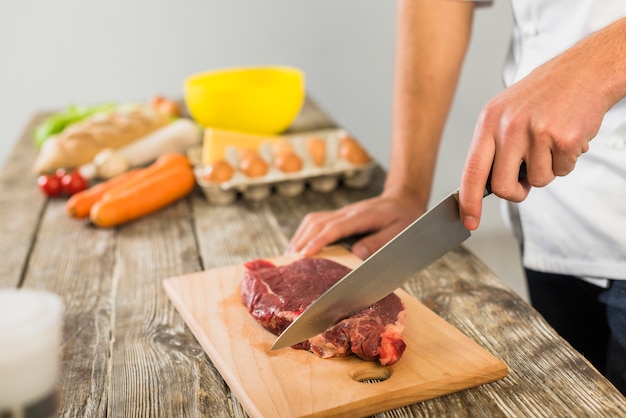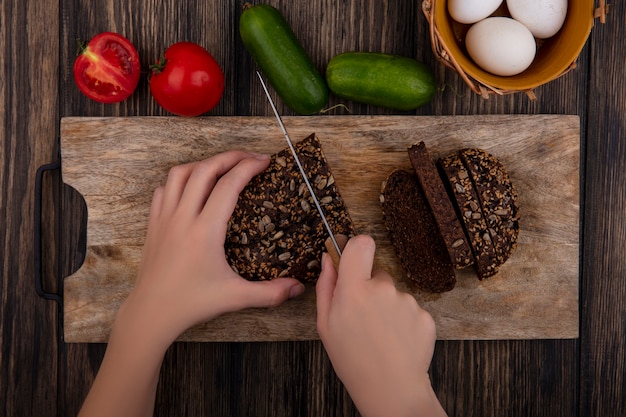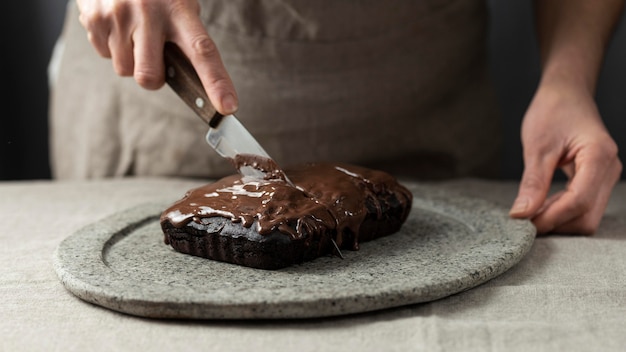There's nothing quite like the satisfaction of a perfectly cooked steak. That glorious sear, the juicy pink center, and the mouthwatering aroma – it's a culinary masterpiece that elevates any meal. But let's be honest, cooking steak can feel intimidating, especially if you're new to the kitchen. I remember my early attempts – those dry, tough pieces of meat were enough to make me question my culinary abilities. But fear not! Over the years, I've learned a thing or two, and I'm here to share my secrets to mastering the art of cooking a perfect thin steak every time.
Part 1: choosing the right steak

It all begins with the right cut of meat. When it comes to thin steaks, you've got a few options that are ideal for quick cooking, delivering that juicy, tender center.
Picking Your Cut:
I'm a big fan of sirloin, ribeye, and flank steak for their distinct qualities. Sirloin is a leaner cut, perfect for those who prefer a bit less marbling. It's a classic choice for its versatility. Ribeye, on the other hand, is the ultimate indulgence – loaded with rich flavor and marbling, making it a crowd-pleasing favorite. Then there's flank steak, known for its intense flavor and leanness. It's a bit tougher than sirloin or ribeye but becomes incredibly tender when cooked correctly.
The Thickness Factor:
Thin steaks are your go-to for a quick and satisfying cook. Aim for a steak that's around 1/2 to 3/4 of an inch thick. This allows for even cooking, resulting in that coveted juicy center with a beautiful sear. Too thin, and it'll cook too quickly, leading to dryness. Too thick, and it'll take longer to cook, potentially resulting in uneven doneness.
The Look and Feel:
When picking your steak, look for a vibrant red color, a good amount of marbling (that lovely white fat), and a firm texture. Avoid any steaks that look dull or have a slimy texture. Freshness is key, so choose your steak from a reputable butcher or grocery store.
Part 2: Prepping Your Steak for Success

Before you even think about firing up the pan, there's a crucial step you absolutely cannot skip. It's the key to achieving that perfect, evenly cooked steak.
The Temperature Tango:
Let your steak hang out at room temperature for about 30 minutes before cooking. This allows the steak to come up to temperature, ensuring more even cooking throughout. It's a small step, but it makes a huge difference in the final outcome. Think of it as giving your steak a little warm-up before its starring role in your culinary masterpiece.
Seasoning Like a Pro:
Salt and pepper are the foundational flavors, but don't be afraid to get creative. I love adding a sprinkle of garlic powder, onion powder, or even a touch of paprika to enhance the steak's natural flavors. But remember, less is more! Overdoing it with seasoning will mask the natural deliciousness of the meat.
The Art of Patting:
Give your steak a gentle pat dry with a paper towel. This helps to prevent splattering and ensures a crispy sear. It's a simple step that makes a big difference in achieving that beautiful, golden-brown crust.
Part 3: Mastering the Cook: Your Steak's Journey to Perfection

Now, it's time to heat things up and cook your steak to perfection. Thin steaks require high heat to get that beautiful sear and juicy center.
The Heat is On:
For a thin steak, you want high heat, like the kind that makes your pan almost smoke. I usually use a cast iron skillet or a heavy-bottomed pan. These pans retain heat exceptionally well, ensuring a beautifully even cook.
The Sizzle Test:
Once your pan is smoking hot, add a tiny drop of water. If it sizzles and evaporates quickly, your pan is ready for the steak! This is your signal that the pan is hot enough to create a fantastic sear.
The Steak's Turn:
Place your steak in the hot pan and resist the temptation to move it for 2-3 minutes. Let it form a nice, crispy crust. Then, flip it over and cook for another 2-3 minutes. This will give you a medium-rare steak, but adjust the cooking time to your preference. Remember, cooking times can vary depending on your desired doneness and the thickness of your steak.
The internal temperature:
A meat thermometer is your best friend for achieving the perfect level of doneness. Insert it into the thickest part of the steak to check the internal temperature. Here's a handy table to guide you:
| steak doneness | Internal Temperature (°F) |
|---|---|
| Rare | 125-130 |
| Medium-Rare | 130-135 |
| Medium | 140-145 |
| Medium-Well | 150-155 |
| Well-Done | 160 |
Rest and Enjoy:
Once your steak is cooked to your liking, remove it from the pan and let it rest for 5-10 minutes before slicing and serving. This allows the juices to redistribute throughout the steak, resulting in a more tender and flavorful final product. Think of it as giving your steak a little break to regain its composure after its culinary journey.
Part 4: Elevating Your Steak with Delicious Sides
A perfect steak deserves equally delicious accompaniments to create a truly satisfying meal. Here are some of my go-to side dish pairings:
mashed potatoes:
Creamy, comforting, and oh-so-delicious, mashed potatoes are a classic pairing for steak. Their rich texture and subtle flavor complement the steak's boldness perfectly.
Roasted Vegetables:
Roasted vegetables add a burst of color and flavor to your plate. Think broccoli, asparagus, Brussels sprouts, or even carrots. The roasting process brings out their natural sweetness and creates a lovely caramelization.
Salad:
A refreshing salad with a light vinaigrette balances the richness of the steak. A simple salad with mixed greens, tomatoes, and cucumbers is a perfect accompaniment.
Mushroom Sauce:
A rich, earthy mushroom sauce adds a layer of complexity and depth to your steak. The creamy texture and savory flavors of the sauce enhance the steak's richness and create a truly unforgettable dining experience.
Part 5: The Art of Resting: A Crucial Step
Resting your steak is as important as the cooking process itself. It's the time to let the steak chill and relax, allowing the juices to redistribute throughout the meat. This results in a more juicy and tender final product, making every bite an absolute delight.
Resting Time:
The general rule of thumb is to rest your steak for 5-10 minutes for every inch of thickness. For a thin steak, 5 minutes will do the trick.
Resting Method:
Simply place your steak on a cutting board and cover it loosely with foil. This will help to keep the steak warm while it rests.
Part 6: Cutting and Serving: The Final Touches
After your steak has rested, it's time to slice and serve. Use a sharp knife to cut the steak against the grain. This helps to tenderize the meat and make it easier to chew.
The Grain Game:
The grain refers to the direction of the muscle fibers in the steak. You want to slice against the grain, cutting across the fibers. This will make the steak more tender and easier to eat. Think of it as giving your steak a little help in breaking down those muscle fibers, making it melt-in-your-mouth tender.
Part 7: Tips and Tricks for Success: Elevating Your Steak Game
Over the years, I've learned a few tricks that make all the difference when it comes to cooking thin steaks. Here are some tips to ensure success:
- Use a Meat Thermometer:
Don't rely on visual cues alone. A meat thermometer is the most accurate way to determine the doneness of your steak. It's a small investment that pays off in perfectly cooked steak every time.
- Don't Overcrowd the Pan:
If you're cooking multiple steaks, make sure to give them space in the pan. Crowding will lower the temperature and prevent a good sear.
- Flip Only Once:
Resist the temptation to flip your steak multiple times. Flipping too often will disrupt the sear and make it harder to achieve a beautiful crust.
- Let It Rest:
Don't rush the resting process. Allowing the steak to rest properly will ensure that it's juicy and tender.
- Experiment with Different Seasonings:
Don't be afraid to step outside the box and experiment with different herbs and spices. Try a sprinkle of rosemary, thyme, or even a pinch of chili flakes to add a touch of zest to your steak.
- Consider a Marinade:
A marinade can add extra flavor and tenderness to your steak. Try a simple marinade of olive oil, soy sauce, garlic, and ginger. Let the steak marinate for at least 30 minutes before cooking.
- Don't Overcook It:
Overcooking is the most common mistake when cooking thin steaks. Check the internal temperature regularly to avoid overcooking.
Don't rely on visual cues alone. A meat thermometer is the most accurate way to determine the doneness of your steak. It's a small investment that pays off in perfectly cooked steak every time.
If you're cooking multiple steaks, make sure to give them space in the pan. Crowding will lower the temperature and prevent a good sear.
Resist the temptation to flip your steak multiple times. Flipping too often will disrupt the sear and make it harder to achieve a beautiful crust.
Don't rush the resting process. Allowing the steak to rest properly will ensure that it's juicy and tender.
Don't be afraid to step outside the box and experiment with different herbs and spices. Try a sprinkle of rosemary, thyme, or even a pinch of chili flakes to add a touch of zest to your steak.
A marinade can add extra flavor and tenderness to your steak. Try a simple marinade of olive oil, soy sauce, garlic, and ginger. Let the steak marinate for at least 30 minutes before cooking.
Overcooking is the most common mistake when cooking thin steaks. Check the internal temperature regularly to avoid overcooking.
Part 8: FAQs: Solving Your Steak-Related Questions
You've got questions? I've got answers! Here are some common questions and their detailed solutions to guide your steak-cooking journey:
1. What if my steak is overcooked?
Don't fret! It happens to the best of us. If your steak is overcooked, there's not much you can do to reverse it. However, you can still enjoy it! Try slicing it thinly and using it in a stir-fry or sandwich. The flavors will still be delicious, even if the texture is a bit different.
2. Can I cook a thin steak in the oven?
Yes, you can! Preheat your oven to 400°F (200°C) and place your steak on a baking sheet. Cook for 5-7 minutes per side, or until your desired doneness is reached. This is a great option if you don't have a cast iron skillet or prefer a more hands-off approach to cooking.
3. What kind of pan is best for cooking a thin steak?
cast iron skillets are ideal for cooking thin steaks because they retain heat exceptionally well. This ensures a beautiful, even sear and prevents uneven cooking. However, any heavy-bottomed pan will work. Just make sure it's hot enough!
4. Can I cook a thin steak on the grill?
Absolutely! Preheat your grill to medium-high heat and cook your steak for 2-3 minutes per side, or until your desired doneness is reached. For best results, use a grill pan. Grilling imparts a smoky flavor and adds a beautiful char to your steak.
5. How do I store leftover steak?
Store leftover steak in the refrigerator in an airtight container for up to 3 days. You can also freeze it for up to 3 months. When freezing, wrap the steak tightly in plastic wrap and then aluminum foil to prevent freezer burn.
Remember, practice makes perfect. Don't be discouraged by a few less-than-perfect attempts. The more you cook steaks, the more confident you'll become. And with a little practice, you'll be serving up perfectly cooked steaks that will impress your friends and family. So, go forth, embrace the heat, and conquer the art of cooking a perfect thin steak!
Everyone is watching

Corn on the Cob: The Ultimate Guide to Perfectly Cooked Ears
Healthy MealsAh, corn on the cob. Just the name evokes images of sunny days, barbecues, and that sweet, juicy flavour that ...

Perfect Pork Roast Oven Cooking Time: A Guide to Delicious Results
Healthy MealsThere's something truly satisfying about a perfectly roasted pork. The aroma alone is enough to make your mout...

Scallops: The Ultimate Guide to Perfect Cooking
Healthy MealsAh, scallops. Those delicate, sweet, and utterly delicious morsels of the sea. They hold a special place in my...

Ham Cooking Time: How Long to Bake, Smoke, or Boil a Delicious Ham
Healthy MealsAh, ham. It's a classic, isn't it? A real crowd-pleaser, especially around holidays. And when done right, it'...

Spaghetti Squash: The Ultimate Guide to Cooking and Serving
Healthy MealsRemember that time you saw spaghetti squash at the supermarket, looking all bumpy and strange, and thought, "W...
